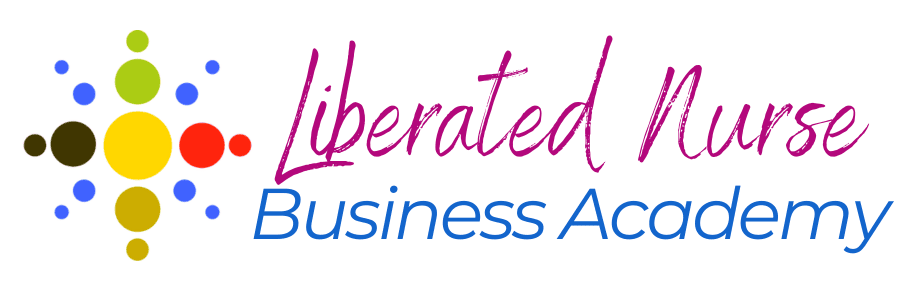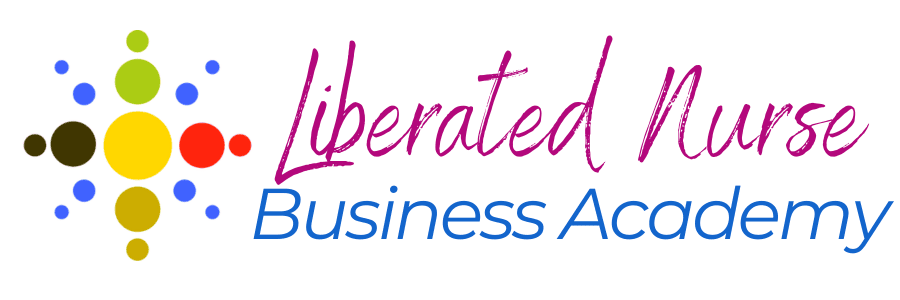As nurse entrepreneurs, we understand the importance of trust and credibility. When clients seek our services, they trust us with their well-being.
To build a thriving business, we must address the inherent risks clients perceive when choosing a service. This article will explore three core strategies to effectively reduce these perceptions of risk.
Before diving into the strategies, let's briefly recap the three essential roles of marketing:
The Three Roles of Marketing
There are three roles of marketing.
- To get your audience’s attention
- To establish if your offer is a good fit by using the three filters of relevance, credibility, and value
- To lower the risk of taking the next step
You might be surprised, but even if someone decides that you are exactly what they are looking for (relevance), that they trust you (credibility), and that your offer is a really good deal for the money (value), they might still not buy.
How could this be?
It’s probably because of a cold, stone wall of risk between you and them.
They are standing on one side of the wall with money and a desire to work with you. However, the wall is too high to get through or over easily.
So, how do we lower, eliminate, or even reverse that wall so it’s a gentle downhill slope toward us? How do we make it easier for people to say ‘yes’?
Core Strategy #1: Develop a Strong Reputation (aka Word-of-Mouth Marketing)
Even in our world of constant digital marketing, word-of-mouth marketing is still the most effective marketing method. A solid reputation built on high-quality care and positive experiences is the most effective way to reduce risk perception because clients often seek guidance from others' experiences.
Here are some ways to cultivate a strong reputation:
Endorsements: Seek endorsements from respected figures in the healthcare community, such as physicians, specialists, or other nurse leaders.
Good Ratings and Reviews: Encourage clients to leave reviews on platforms like Yelp or Google Reviews.
Public Relations (PR): Secure positive media coverage, such as articles featuring your services or client testimonials.
Networking: Attend healthcare conferences, association meetings, and seminars to connect with potential clients and colleagues.
Hosting Events: Organize events, e.g., workshops, health fairs, or community screenings, to showcase your expertise.
Credentials and Expertise: Highlight your years of training, specialized certifications, number of clients served, and the size of your team.
Positioning Yourself as an Expert:
Write a book or contribute to professional journals.
Lead seminars or workshops on relevant health topics.
Showcasing Past Results:
Develop case studies demonstrating successful client outcomes.
Share photos or examples of past work.
Testimonials: Collect and share testimonials from satisfied clients. Include:
- Full name
- Credentials
- Location
- Contact information (with permission)
- Before/After experiences
- Stories of challenges overcome
- What makes you unique
- Biggest client benefit
- Comparison to competitors
The Power of Word-of-Mouth (Silverman's Insights)
George Silverman's work on word-of-mouth marketing emphasizes its importance, especially for high-stakes services like healthcare. Clients rely on others' experiences to mitigate risk when direct experience is impractical or too risky. Key takeaways from Silverman:
- Direct experience can be risky, time-consuming, and anxiety-producing.
- Indirect experience (hearing about others' experiences) can be more valuable than direct experience.
- People are more likely to trust recommendations from peers, experts, and independent rating services.
Core Strategy #2: Taking Risk On Yourself
To further reduce risk perception, consider taking some risks yourself. This will show clients your confidence in your services.
Flexible Payment Options: Offer payment plans or initial consultations at a reduced rate.
Trial Periods: Provide a trial period or introductory session at no cost.
Value-Added Offers: Include extra services or products as a bonus.
Free Initial Services: Offer a free foot massage at a health fair or a free blood pressure screening at a community event.
Results-Based Payment: Offer a payment structure where you are paid based on the results achieved for your clients. This shows that you are confident in your services.
Loss Leaders: Offer an initial service or product at a very low cost or for free to attract new clients.
Offering Strong Guarantees
Strong guarantees can significantly reduce perceived risk. Taking on the risk demonstrates confidence in your services and commitment to client satisfaction.
Insights from Experts
Jay Abraham: Emphasize no-risk guarantees and provide a long enough timeframe for clients to feel secure.
Clayton Makepeace: The stronger the guarantee, the better. Consider tying guarantees to specific outcomes or performance benchmarks.
Marketing Without Advertising: Establish a clear recourse policy to address client complaints and concerns.
Key Considerations for Guarantees
Completely Guarantee the Purchase: Define specific, measurable outcomes and guarantee them.
Bring Guarantees to the Forefront: Don't hide them in small print. Make them prominent.
Extend the Time Frame: Longer guarantees build more trust. Lifetime guarantees can be especially powerful.
Make it a "Soft" Warranty: Focus on how clients will feel and the experience they will have.
Better Than Risk-Free: Compensate clients for dissatisfaction, including their time and trust.
Free Trials: Offer free trials to allow clients to experience your services firsthand.
Guarantee Examples
Here are some examples of strong guarantees tailored for nurse entrepreneurs.
Health Coaching: "If you don't see a measurable improvement in your health goals within 90 days of following my personalized health coaching program, I will refund your entire investment."
Wellness Products: "If you are not completely satisfied with our wellness products, you can return them within 60 days for a full refund, no questions asked."
Consulting Services: "If my consulting services do not result in a positive change in your business within three months, I will provide additional consulting sessions at no charge until you are satisfied."
Core Strategy #3: Education
Education is crucial for building trust and reducing skepticism. The more clients understand your approach and expertise, the more confident they will be in their decisions.
Provide Evidence: Back up your claims with articles, press stories, data, charts, graphs, and client lists.
Share Your Credentials: Highlight certifications, awards, and professional affiliations.
Offer Product Demos: Let clients see and experience your products or services firsthand.
Educate on Your Point of View: Explain your unique approach and why it benefits clients. Share your expertise through workshops, webinars, and blog posts.
But education is not just about ‘facts.’ It’s also about context. You need to also…
Educate Clients on Your Point of View
The bigger your claims, the less likely people will believe you. The bigger your claims, the more proof you’ll need to back them up. If you make a really good offer, people will be skeptical and ask themselves, “Why should I believe you?”
So, walk clients through your process and explain why your approach is unique and beneficial. This builds confidence and trust. Don't just tell them what you do; tell them why you do it that way.
Answer the question, “What do people need to see or hear to know they are making the best buying decision possible?”
Let's delve deeper into the scenario of the nurse entrepreneur who positioned her services at a premium price point. While her competitors offered similar services at a lower rate, her unique selling proposition was the comprehensive care she provided. This led to fewer complications, reduced medication expenses, and highly personalized attention to each client's needs, translating to substantial long-term cost savings. However, the initial sticker shock of the higher price tag proved to be a significant barrier.
To address this challenge, the nurse entrepreneur adopted a multi-pronged strategy. She recognized the power of social proof and enlisted the help of her satisfied clientele. Having experienced the tangible benefits of her services, these clients became her brand advocates. Their testimonials and success stories were compelling evidence of her value.
Furthermore, she gave potential clients the tools they needed to see the value in her services. She developed a comprehensive presentation template highlighting her approach's long-term cost-effectiveness. This template included data on reduced complications, lower medication costs, and other quantifiable benefits. Additionally, she created sample budget spreadsheets that potential clients could customize to demonstrate the financial advantages of choosing her services over the competition.
By providing social proof and tangible resources, the nurse entrepreneur empowered potential clients to make a strong case for her services to their insurance companies and employers. This approach addressed the initial hesitation surrounding the higher price and underscored the long-term value and cost-effectiveness of her unique approach to care.
This case study highlights the importance of effectively communicating the value proposition of premium services in healthcare. While initial costs may be higher, we can focus on the long-term benefits and cost savings. By leveraging social proof and providing tangible resources, nurse entrepreneurs can respectfully respond to price objections and enroll clients who value quality and comprehensive care.
Conclusion
Trust and credibility are the cornerstones of nursing. By prioritizing these values, you can create lasting relationships with your clients and make a positive impact on their lives. Nurse entrepreneurs can effectively reduce risk perception and build thriving businesses by implementing these three core strategies: building a strong reputation, taking on risk, and educating their clients.


